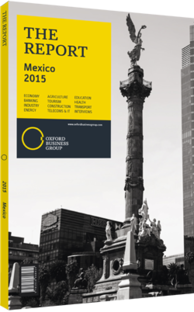A guide to Mexico's lucha wrestling tradition
The swirling line for the ticket office is full of parents taking their young kids for a night out. The boys, about 12 or 13 years old, wear t-shirts celebrating their favourite luchadores (wrestlers). Flying high or power-posing, the images of masked men with enigmatic names: Hombre-Bala Jr (Bullet Man Jr), Nosferatu, Shocker. There is even one child wearing a t-shirt with the image of El Santo (The Saint), one of Mexico’s most famous wrestlers, turned movie star, comic book persona and national folk hero. Waiting for his turn, a father with his arm over his eldest son knows he will be paying close attention to the night’s clashes. “He wants to be a luchador,” the father says, looking at him. Claimed by some to be the country’s most popular event after football, lucha libre (wrestling) is an entertaining mix of combat sport and theatrical bravado.
Arena Mexico is one of the main places to catch a lucha libre match in the Mexican capital. Crowds flock in to see their favourite wrestlers perform acrobatic fights in the ring and around it. In the entrance, a high mural meshes Mexican history with one of its most famous sports. Several Aztec characters fight the Spanish colonisers, and a human-like leopard creature holds an armoured invading soldier in a headlock, helplessly unable to reach his sword nearby.
Roots
Modern lucha libre finds its roots in the Mexico’s more recent past, becoming popular during the early 1900s as a less restrictive form of man-to-man fighting based on Greco-Roman wrestling. In 1933 Salvador Lutteroth González established the first lucha libre promotion company, and began promoting fights across Mexico, after attending several events in El Paso, Texas. Aerial moves and face masks, which allow wrestlers to hide their identities, have shaped the sport. During the 1950s and 1960s, la lucha gained a massive following, becoming ingrained in national culture.
Heroes
Comic book stories based on wrestlers and their quest for justice became bestsellers, and television further elevated the status of wrestlers as national heroes. El Santo, also known by the moniker El Enmascarado de Plata (The Silver-Masked One) became particularly famous. His real name, Rodolfo Guzmán, was only known to his family and closest friends. He was characterised by wearing a silver-coloured mask on all occasions; during fights, public appearances and his participation in over 60 movies. El Santo’s real identity would be revealed only days before his death in 1984. In an evening television show, Mexicans got a first glimpse of their national hero’s face, as El Santo took off his mask for the first time. Rodolfo Guzmán died a week later at 66 years of age. His funeral was a national event and he was buried wearing his mask.
Fight Night
Inside the Arena Mexico, the aisles dividing seating areas are teaming with sellers of beer, soft drinks, popcorn and slices of pizza. Some sell masks and dummy replicas of popular fighters. The loud music and flashing lights illuminating the still-empty ring compete with the announcer’s voice. Most nights have a succession of fights leading up to the main event, where the most popular wrestlers, the ones that sell tickets, generally face-off. Lucha libre has its pecking order: fighters make their way up, based on their popularity and level of athleticism. It is, however, a dangerous and ill-remunerated affair. A recent article by Mexican newspaper El Universal found that a medium-ranked wrestler can make as little as MXN7000 ($471) per fight. Pay for a more popular fighter can reach MXN25,000 ($1680) for a night of kicking, punching and high flying that can land a wrestler outside the ring or worse.
Women in scant clothing dance; the show is about to start. With loud acclaim by the commentator and confetti-shooting cannons, the night’s first wrestler comes down some steps. He runs and launches head first towards the ring. Lands, rolls and quickly gets back to his feet, climbing on top of the ropes. Standing tall, the masked fighter wearing a red cape salutes his audience. He is received by the deafening sound of both fans and detractors: some cheer, others heckle him. That is the nature of the show. Lucha libre, like much of Mexico’s folklore, is made up of heroes and villains.
You have reached the limit of premium articles you can view for free.
Choose from the options below to purchase print or digital editions of our Reports. You can also purchase a website subscription giving you unlimited access to all of our Reports online for 12 months.
If you have already purchased this Report or have a website subscription, please login to continue.

